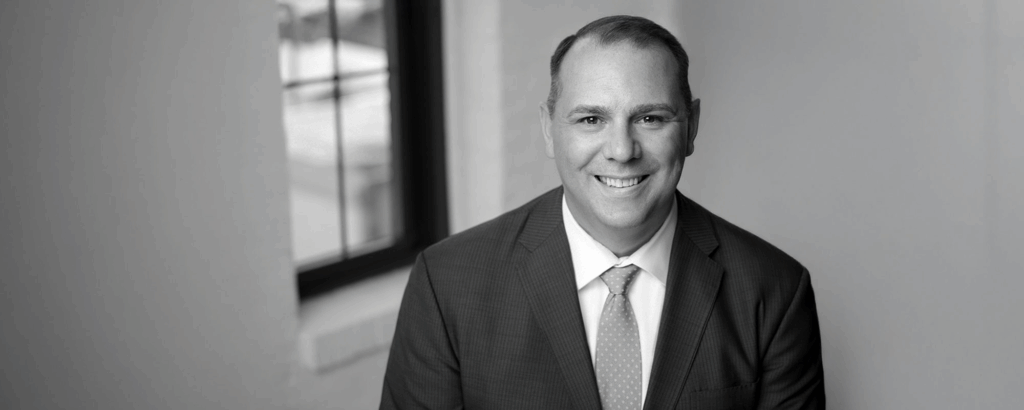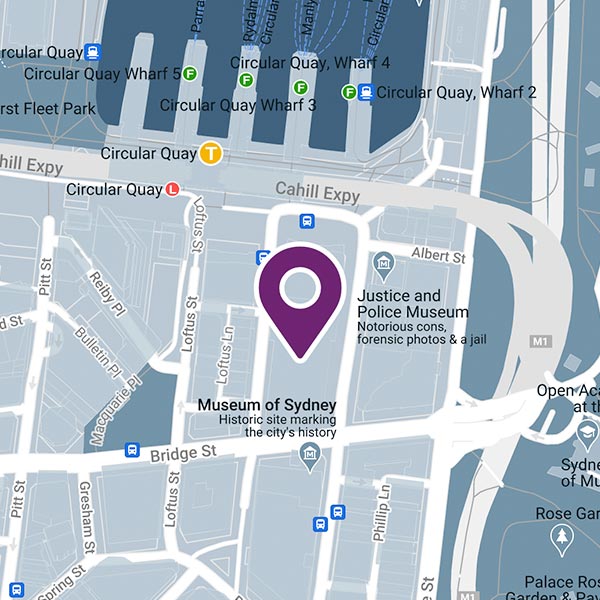Welcome to Part 2 of our Eliot Insights Series, where we delve into the issues, trends, and developments shaping the insurance industry. In this edition, Lydia Pitts, Senior Partner, speaks with Brad Whatley, Director of Global Life, about the state of the life insurance sector.
They talk through market shifts, the role of technology, changes in the talent market, and the skills that will matter most for future leaders. Brad also shares how he built Eliot Partnership’s global Life Insurance Practice, the challenges and wins along the way, and his approach to connecting clients with top executive talent.
Question 1
LP: What are the current trends that you’re seeing in the life sector and how have those trends evolved over the last few years?
BW: There have been several different trends, especially over the last 18–24 months in the industry, that I think are impactful. One would be a newfound emphasis on digital distribution and direct-to-consumer. A lot of organizations are reinvesting or more heavily investing in the direct-to-consumer model, be it embedded insurance, omnichannel strategies, or different things to meet evolving customer expectations.
Another area is product innovation and retirement focus. Rising interest rates have boosted demand for fixed and indexed annuity products. Insurers are rethinking savings-oriented life products as they gain traction, especially in emerging markets.
The elephant in the room is AI and automation, specifically in sales and underwriting, but also in the back of the house.
When you look at claims, actuarial, and accounting, AI wasn’t even a true idea in the insurance industry several years ago. On the reinsurance side, there is definitely an emphasis on capital efficiency and portfolio transfers. A lot of that can be related to the growing impact that private equity and asset managers have had in the industry and their continued push into the market, especially on the alternative asset side.
Question 2
LP: And how does that impact the talent landscape that we're seeing at the moment?
BW: “How that correlates to talent is several fold. The first is that with a shift in products and product innovation, you have a focus on distribution individuals to get those other pillars of revenue stream products to market. That ties directly into working closely with underwriting and actuarial.
People who are embracing this change—embracing the technology and the change, and not being happy being static—are key. Organizations are looking to capitalize on talent that can bring new and dynamic products to the market.
On the back of the house, as products shift and different elements of the business strategy come to fruition, you have to support them through finance changes, actuarial changes, and pricing and valuation model development. Going back to AI, partnering with AI and understanding holistically as an organization what you’re trying to accomplish directly impacts what the support functions do in the back of the house.”
Question 3
LP: What are the biggest challenges that you are facing when placing senior and executive roles in life insurance businesses? And how have you looked to overcome these challenges?
BW: “There are really two sets of challenges when placing a senior-level executive—one on the client side and one on the candidate side.
On the candidate side, most people are happy and content in their current roles. Changing organizations is a major, life-altering decision for individuals, especially executives who are tenured in their careers and have had longevity in their current organization. Going through this is also a time-consuming process, so candidates want to know that when they’re approached with a role, it’s going to be worth their time and effort to pursue it.
You overcome those challenges by building trust with individuals throughout the process, understanding their career and personal goals, and approaching them with roles that align with both. It’s also about transparency. Executives want to understand what they’re getting into and what the process will look like from beginning to end.
When you approach an executive with an exciting opportunity at an organization where they will be a culture fit or culture add, you’re matching both their personal and professional goals. It aligns with their skill sets and expertise or gives them a step forward in their skills so they can grow professionally. This fosters trust and builds relationships, making the process much easier.
On the client side, especially in this market where organizations are making key strategic decisions, the challenge is overcoming the mindset of “this person looks great, but we want to see another.” Clients want to know if this is really the best in the market. That boils down to trust and the relationship you have with your clients.
One of the things that excites me is that our rigorous research allows us the confidence to know we’ve identified the whole market. We present that data to our clients throughout the process, so when we lay out six to eight best-in-class people, they have the confidence and peace of mind that they’re not missing out on other individuals, and they trust the process we’ve brought them through.”
Question 4
LP: Brad, we touched on this earlier in our conversation and it's such an important question across the market at the moment. How is the improvement in technological capabilities changing the skill set asks for the life insurance executive?
BW: “The change in technology is impacting the skill sets that organizations are looking for in executives, specifically in the life reinsurance industry. They are looking for individuals who are comfortable embracing the concept of technology.
You can no longer be a static organization where the thinking is “we’ve done it this way for a long time, we’ve done very well, and we’re going to continue to do it.” Organizations want individuals who embrace AI, automation—whatever the case might be—to whatever risk threshold matches that organization. They want leaders who will bring IT and technology into the room to make decisions and move the organization forward.
If you’re an executive in the life or life reinsurance industry, it’s definitely beneficial to embrace technological changes. Partner with IT and other functional areas to put together a comprehensive strategy to capitalize on them. If you’re best in class at what you do but see technology as just another part of the organization—or as a vertical that doesn’t concern you—it can have negative consequences for moving into the executive ranks.”
Question 5
LP: In terms of market disruption, are there emerging disruptions in the life market that could impact future executive roles?
BW: “There are. In the industry right now, there are several areas I would put in the disruptor category.
One is the rise of private capital and asset management-led models. These are increasingly blending insurance with asset management to drive growth. CFOs and chief investment officers will need deep expertise in alternative assets, structured finance, and public-to-private market transactions and transitions.
Another is generative AI and automation. Even without generative AI, automating what you can—while still remaining accurate and reducing manual processes—is going to continue to disrupt the industry.
And then there’s a distribution power shift. Distributors are claiming more value creation, with third-party channels growing rapidly and consolidating. This puts more focus on chief marketing officers to embrace that shift, partner effectively, and capitalize on those relationships.”
Question 6
LP: I’d love to talk about executive development and the next tier of executive talent below the C-suite. How do you identify high-potential candidates for pipelining to executive-level roles?
BW: “Executive development and continuous learning are paramount to success in life insurance companies—or any company. We’re in an environment of innovation, disruption, and industry change that is happening at an ever-increasing pace.
For companies to be successful, leaders must adapt strategy to changing landscapes—whether it’s technology, private equity, new regulations, or competition for talent. If an executive does not want to stay at the forefront of learning and be a continuous learner, they will quickly become obsolete, and as a company, they’ll be surpassed by competitors. You need to be willing to embrace change and work in a dynamic environment, or competitors will take your market share.
When identifying high-potential individuals for executive roles, you see over time who truly is a lifelong learner. Those who embrace change, solve problems, and execute at a high level in various environments will move up quickly. The way they handle conflict and the approach they take to delivering ideas—whether learning new technology, solving problems creatively, or showing the ability to see the bigger picture beyond their own area of expertise—are key indicators of future success in the executive ranks.
LP: I’ll add to that, Brad. Our process and the way we conduct diligence—rather than relying on a black book of current executives—allows us to go deeper. We look for the next tier of talent and build relationships with them before searches even begin. Our candidate assessment framework and pre-referencing approach mean we’re actively networking at that level, not just reacting when a role comes online.”
Question 7
LP: In terms of the leaders of tomorrow, what qualities do you believe will define successful life insurance leaders in the future? Are there differences from what was valued in the past?
BW: “Yes. Over the last three to five years, I’ve seen a fundamental change in what’s valued in leadership. Organizations are looking for people who can communicate a common goal, mission, and vision—and rally people to get behind it. Leaders need to show people how what they’re doing, regardless of their role in the organization, contributes to that goal.
Future leadership success will be based on those who can motivate, lead, and develop people. Our industry is not young, and organizations need leaders who can develop others. That’s true for today’s leaders and the next generation. Leaders must be able to find their replacement and set the organization up for success three to five years from now.
If you look at the diminishing tenure of executives—down from 12–15 years to around 3.5–4 years—organizations are going to focus heavily on leaders who can continuously develop and future-proof the organization from within.
Historically, companies wanted the most technical person in the role to lead—whether chief actuary, CFO, chief accounting officer, or CHRO. Life insurance used to be led by many former salespeople who moved up through success in sales. Now, yes, technical capability is still important, but so is the ability to lead, motivate, and develop people. Being the technical expert doesn’t automatically make you the best person to lead a division or organization.”
Question 8
LP: We often hear this from candidates, but what can candidates do to capture the attention of executive search businesses?
BW: “Three things come to mind.
First, quantify your success. “25 years of leadership experience” doesn’t stand out as much as “increased product sales by 75% over three years” or “led an organizational digital transformation across underwriting and claims with measurable results.”
Second, be visible and active in the industry. Post on LinkedIn, accept interview requests from industry publications, and be active in your professional associations. Show that you’re adding to your skill set and that you’re not content to remain static.
Third, build your network. Most introductions and candidates in retained search come from referrals. This is a relationship-based business, and being present and engaged in the industry makes you easier to find.”
Question 9
LP: Tell us about the development of the life practice at Eliot Partnership from inception three years ago to where it is now.
BW: “It’s hard to believe three years have gone by already. When we started, our brand recognition in the life insurance and life reinsurance space—especially domestically—was limited. A big focus was on creating market awareness and educating the market on who we are and what we do.
We had early international success in our first 12 months, with clients trusting us to identify key leadership roles. That allowed us to deliver on our promise and show the value of true sector specialization and the boutique service we provide. It also proved that clients valued our one P&L approach and cross-border work as one organization.
That early success allowed us to expand the team. Richard Howard joined our London office after my first year, bringing a strong reputation in the UK and European markets. Peter Elliott joined as a senior advisor, having retired as a country CEO for a global life reinsurance company. My colleague Christina Chua in Singapore shifted to focus more on life.
With Peter and Richard in London and Christina in Singapore, we can truly offer a global solution to our clients. Our one P&L approach means we work seamlessly across borders with no silos or competing interests. We’ve executed on many remits in the US, Bermuda, and globally, and having many repeat clients in such a short time confirms the value we bring.”
Question 10
LP: Finally, what has been your personal experience moving to Eliot Partnership and starting the practice?
BW: “Joining a new organization is always exciting and a little nerve-wracking—especially with the remit of building out a global life insurance and reinsurance practice in retained search. But I had built strong relationships with senior partners here, including our managing partner Andrew Elliott, and I believed in both what we’re doing and how we’re doing it. The vision, camaraderie, and team atmosphere made the transition much easier.
The biggest challenge has been educating the market—not only that we’re here, but how we do what we do and the value it brings. Our process is unique in the industry, so guiding clients through it and showing the benefits has been important.
The rewards are twofold. First, once you earn a client’s trust and they rely on you to find a leader for their organization, that’s a responsibility I take seriously. Placing someone who will have a significant impact on that organization—and seeing them grow in their role—is very rewarding.
Second, the relationships I’ve built internally are invaluable. We have tremendous people in the organization, and I have implicit trust in our execution teams. We strategize well together and communicate effectively before, during, and after searches—both domestically and cross-border. That strengthens our one P&L approach and our ability to work as one team toward a common goal.
Our organization thinks long term in its decisions and strategies, and that vision is reflected in how we execute for our clients.”
You can learn more about Brad and how he helps clients find world-class life insurance leadership here.












